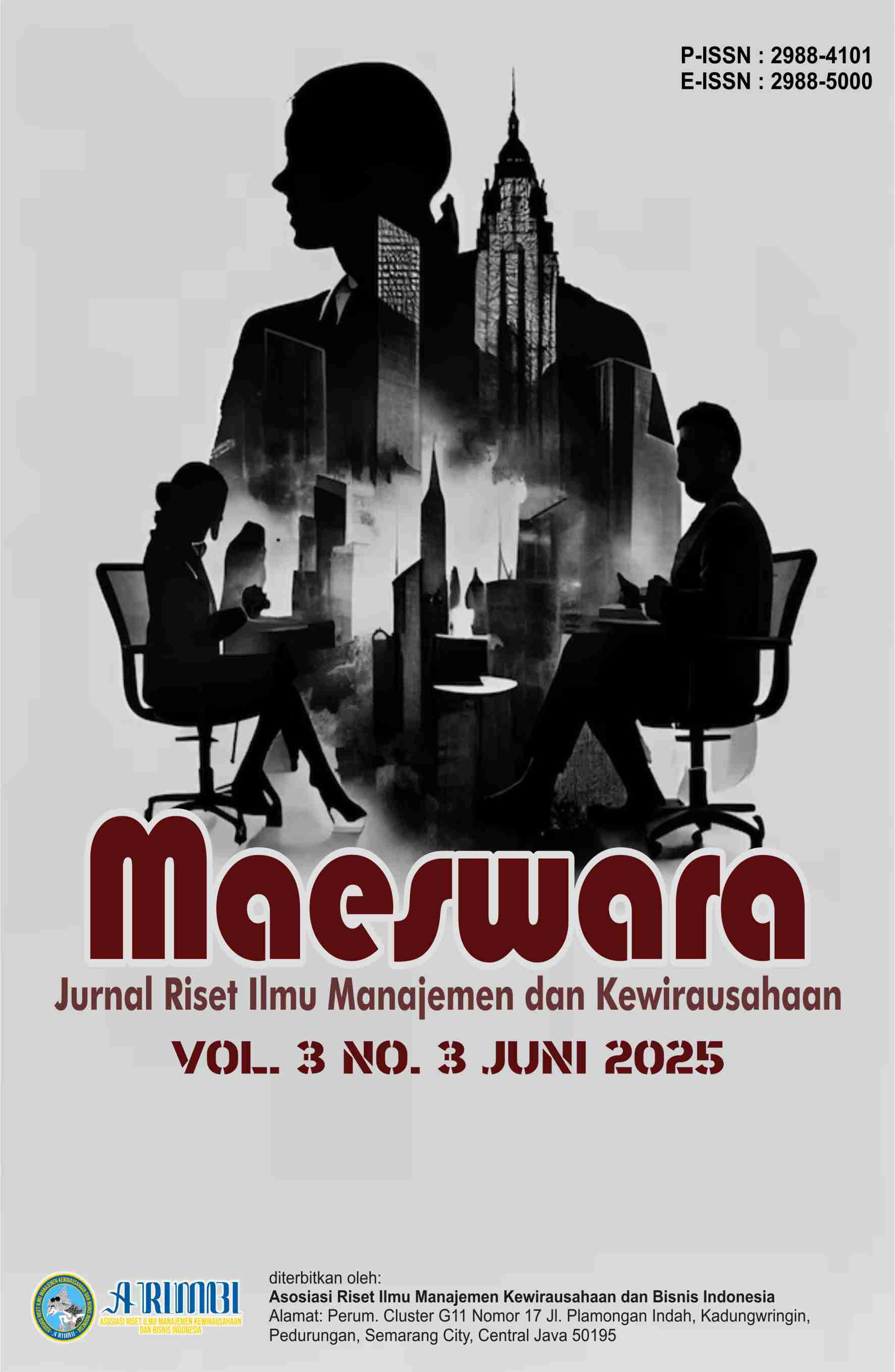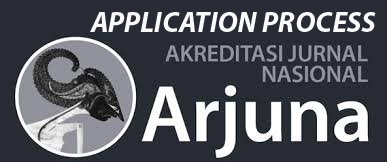Analisis Kesejahteraan Karyawan pada PT P
DOI:
https://doi.org/10.61132/maeswara.v3i3.1775Keywords:
Employee-Welfare, Working-Conditions, Company-Policy, EmployeesAbstract
This study analyzes the impact of employee welfare on working conditions at PT P, focusing on welfare policies and facilities such as health insurance, employment insurance, on-site clinic services, maternity leave, workload balance, and working hours. Using a qualitative descriptive method, data were collected through interviews and direct observation of several employees. The findings show that company-provided welfare positively influences working conditions. Health facilities and work protection increase employees' sense of security and comfort. In addition, fair working hours, sufficient rest time, and attention to both physical and psychological well-being enhance work motivation and employee loyalty. Employees feel appreciated when the company supports work-life balance, leading to a more productive, harmonious, and low-conflict work environment. The study concludes that employee welfare is a key factor in shaping the quality of the workplace.
Downloads
References
Azis, A., Eldianson, & Tampubolon, M. (2022). Kesejahteraan karyawan mempengaruhi produktivitas kerja perusahaan di era pandemi Covid-19. El-Mal: Jurnal Kajian Ekonomi & Bisnis Islam, 3(3), 608–616. https://doi.org/10.47467/elmal.v3i3.968
Busetto, L., Wick, W., & Gumbinger, C. (2020). How to use and assess qualitative research methods. Neurological Research and Practice, 2, 14. https://doi.org/10.1186/s42466-020-00059-z
Goh, J., Pfeffer, J., & Zenios, S. A. (2015). Workplace stressors and health outcomes: A meta-analysis. Journal of Occupational Health Psychology, 20(1), 1–17.
Grant, A. M., Parker, S. K., & Patil, S. V. (2019). Employee well-being and job performance: A meta-analysis of longitudinal studies. Journal of Applied Psychology, 104(6), 1234–1250.
Hariri, A., Hasmy, A., Rubiyanto, H., Mahmudah, D., & Wahyuni, W. (2024). Employee welfare programs on productivity and job satisfaction. Research Psychologie, Orientation et Conseil, 1(3), 178–186. https://doi.org/10.70177/rpoc.v1i3.1318
Hassard, J., Teoh, K., Visockaite, G., Dewe, P., & Cox, T. (2018). The cost of work-related stress to society: A systematic review. Journal of Occupational Health Psychology, 23(1), 1–17. https://doi.org/10.1037/ocp0000069
Juniper, B. (2015). Evaluation of a novel approach to measuring well-being in the workplace. Journal of Occupational Health Psychology, 15(1), 1–10.
Kelly, E. L., Moen, P., & Tranby, E. (2020). Changing workplaces to reduce work-family conflict: Schedule control in a white-collar organization. American Sociological Review, 86(4), 573–602.
Kundi, Y. M., Aboramadan, M., Elhamalawi, E. M. I., & Shahid, S. (2021). Employee psychological well-being and job performance: Exploring mediating and moderating mechanisms. International Journal of Organizational Analysis, 29(3), 736–754. https://doi.org/10.1108/IJOA-05-2020-2204
Kusumawati, H. (2020, October). Analisis pengaruh keterlibatan kognitif, keterlibatan emosional dan kelelahan emosional terhadap kepuasan kerja, dimoderasi oleh variable sinisme studi pada institusi pendidikan di Indonesia. In Seminar Nasional FMI Konvil Yogyakarta. FMlKorwilD. I. Yogyakarta.
Kutsiyyah, K. (2021). Analisis fenomena pembelajaran daring pada masa pandemi (Harapan menuju blended learning). Edukatif: Jurnal Ilmu Pendidikan, 3(4), 1460–1469. https://doi.org/10.31004/edukatif.v3i4.580
Liang, M., & Irawan, M. D. (2023). Analisis aplikasi SIKAR dengan metode triangulasi pengelolaan surat masuk dan keluar. Blend Sains Jurnal Teknik, 1(4), 267–276. https://doi.org/10.56211/blendsains.v1i4.226
Marwan, A. I. (2016). Employee well-being dan employee engagement. Jurnal Ilmu Manajemen, 4(2), 60–68.
Meiliyandrie, L., Wardani, I., & Amaliah, A. (2020). The role of psychological empowerment as mediator between psychological capital and employee well-being. Jurnal Psikologi, 7(13), 291–296.
Noe, R. A., Clarke, A. D. M., & Klein, H. J. (2020). Learning in the twenty-first-century workplace. Annual Review of Organizational Psychology and Organizational Behavior, 7, 1–25. https://doi.org/10.1146/annurev-orgpsych-012119-044526
Nurul Faraain, M. R., Sharifah Khairol Musairah, S. A. M., & Sabiroh, M. S. (2019). Exploring workplace injustice and employees’ well-being in Malaysia. International Journal of Accounting, Finance and Business, 4(21), 76–91.
Perdhana, S. M., Maharani, D. A., & Sawitri, R. D. (2020). Menginvestigasi employee well-being pada karyawan lintas generasi di organisasi publik di Jawa Tengah. Jurnal Ilmu Manajemen, 4(2), 60–68.
Pfeffer, J. (2018). Dying for a paycheck: How modern management harms employee health and company performance—and what we can do about it. Harper Business.
Pradhan, R. K., & Jena, L. K. (2017). Employee performance at workplace: Conceptual model and empirical validation. Business Perspectives and Research, 5(1), 1–17. https://doi.org/10.1177/2278533716671630
Pretsch, E., Saretzki, J., & Kraus, H. (2020). Improving employee well-being by means of virtual reality – REALEX: An empirical case study. Journal of Occupational Health Psychology, 25(2), 95–105.
Rahim, N. B., Osman, I., & Arumugam, P. V. (2020). Linking work-life balance and employee well-being: Do supervisor support and family support moderate the relationship? International Journal of Business and Society, 21(2), 588–606.
Sadida, N. (2018). Hubungan antara health consciousness dengan employee well-being pada karyawan di DKI Jakarta. Journal of Psychological Science and Profession, 2(3), 216–225. https://doi.org/10.24198/jpsp.v2i3.19223
Santina, R. O., Hayati, F., & Oktariana, R. (2021). Analisis peran orangtua dalam mengatasi perilaku sibling rivalry anak usia dini. Jurnal Ilmiah Mahasiswa, 2(1), 1–13.
Saputra, A. G., Nadhifah, N. K., Tri Ananda, M. N., Raharjo, S. T., & Resnawaty, R. (2020). Pelaksanaan kesejahteraan karyawan sebagai wujud corporate social responsibility melalui program BPJS Ketenagakerjaan. Prosiding Penelitian dan Pengabdian Kepada Masyarakat, 6(3), 246–252. https://doi.org/10.24198/jppm.v6i3.26213
Simone, S. D. (2015). Conceptualizing wellbeing in the workplace. International Journal of Business and Social Science, 5(12), 118–122.
Siregar, Y. S., Darwis, M., Baroroh, R., & Andriyani, W. (2022). Peningkatan minat belajar peserta didik dengan menggunakan media pembelajaran yang menarik pada masa pandemi Covid-19 di SD Swasta HKBP 1 Padang Sidempuan. Jurnal Ilmiah Kampus Mengajar, 2(1), 69–75. https://doi.org/10.56972/jikm.v2i1.33
Zheng, X., & Liu, X. (2016). The effect of interactional justice on employee well-being: The mediating role of psychological empowerment and the moderating role of power distance. Acta Psychologica Sinica, 48(6), 693–702. https://doi.org/10.3724/sp.j.1041.2016.00693
Downloads
Published
How to Cite
Issue
Section
License
Copyright (c) 2025 Maeswara : Jurnal Riset Ilmu Manajemen dan Kewirausahaan

This work is licensed under a Creative Commons Attribution-ShareAlike 4.0 International License.






